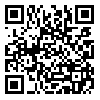Volume 13, Issue 1 (2010)
mjms 2010, 13(1): 69-78 |
Back to browse issues page
1- Department of Physical Thraepy, Faculty of Rehabilitation, Tabriz University of Medical Sciences, Tabriz, Iran
2- Assistant Professor, Department of Physical Thraepy, University of Social Welfare and Rehabilitation Sciences, Tehran, Iran
3- Assistant Professor, Department of Biostatistics, University of Social Welfare and Rehabilitation Sciences, Tehran, Iran
2- Assistant Professor, Department of Physical Thraepy, University of Social Welfare and Rehabilitation Sciences, Tehran, Iran
3- Assistant Professor, Department of Biostatistics, University of Social Welfare and Rehabilitation Sciences, Tehran, Iran
Abstract: (7132 Views)
Objective: Due to the frequent use of surface electromyography as a tool for the study of muscle function, to accurately compare electromyographic data from different muscles and different subjects, it is necessary to normalize the integrated data obtained from each muscle. The most common normalization technique is the use of maximum voluntary isometric contraction (MVIC) of a predetermined isometric movement as the reference electromyographic signal.
The purpose of this study was to determine the Reproducibility of maximum voluntary isometric contraction of shoulder muscles in Empty Can position test and the correlation between force and MVIC of shoulder muscles.
Materials and Methods: The electromyographic activity of these four muscles (anterior and middle deltoid, upper and lower trapezius) was examined in 20 healthy subjects (10 men and 10 women with 31.25±8.92 age). Muscle force was determined by dynamometer. Each test repeated 3 times.
Results: Results showed that same day test retest reliability coefficients were significant (ICC>95%), but separate day test retest reliability coefficients were not significant.
Maximum muscle force did not relate to any of muscles MVIC amplitude.
Conclusion: Reproducibility results may be due to electrode placement, emotional and physical condition of subjects and the large range of motion of shoulder and compensatory movements of shoulder and trunk.
Received: 2009/12/15 | Accepted: 2010/02/6
| Rights and permissions | |
 |
This work is licensed under a Creative Commons Attribution-NonCommercial 4.0 International License. |


